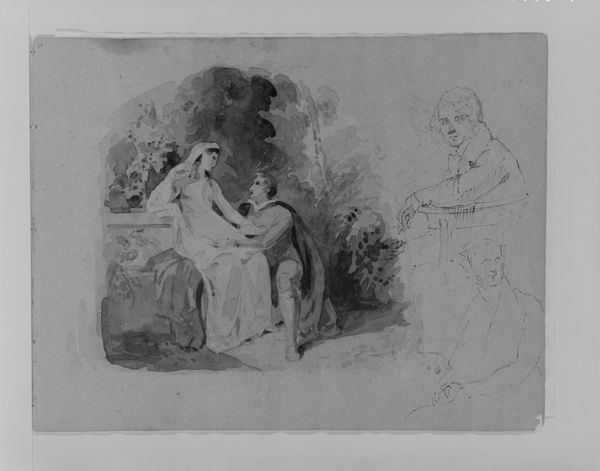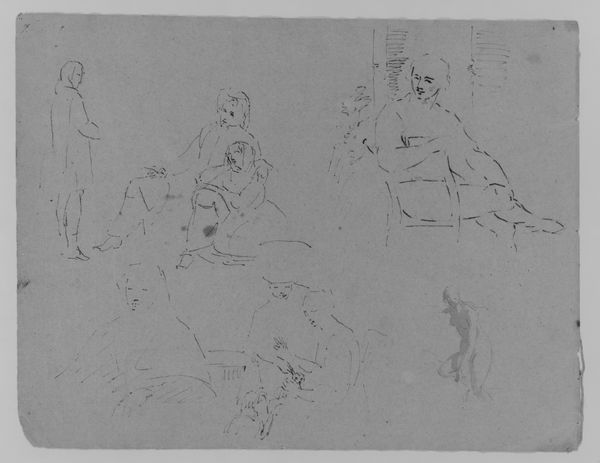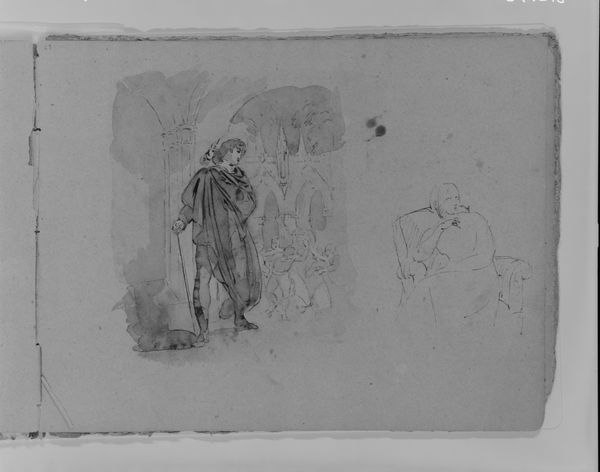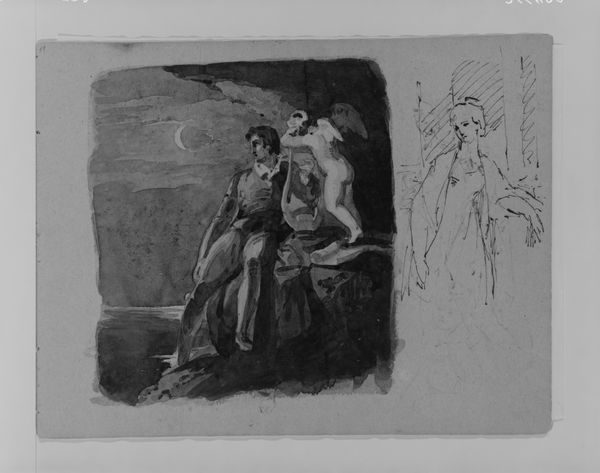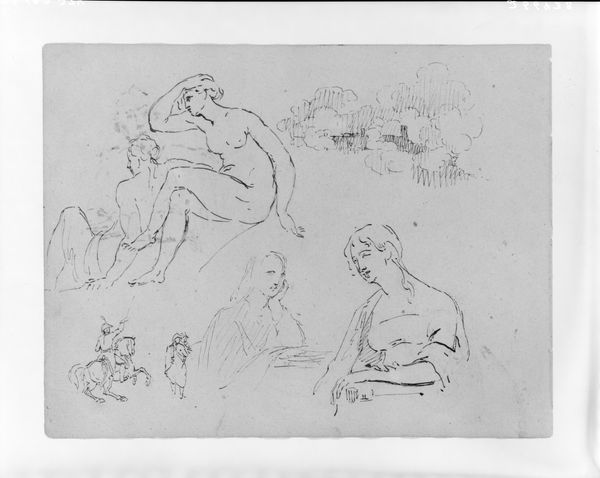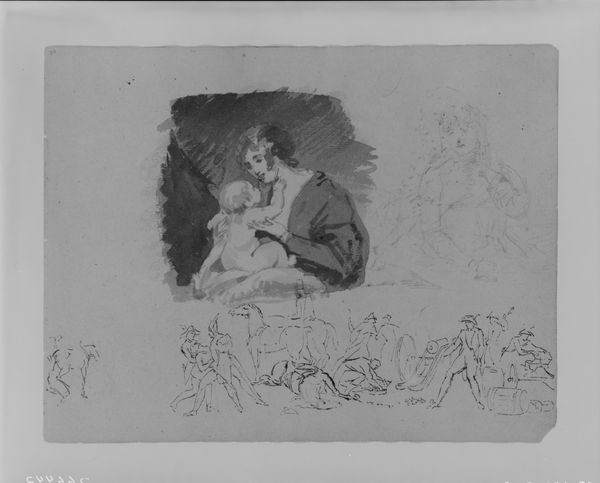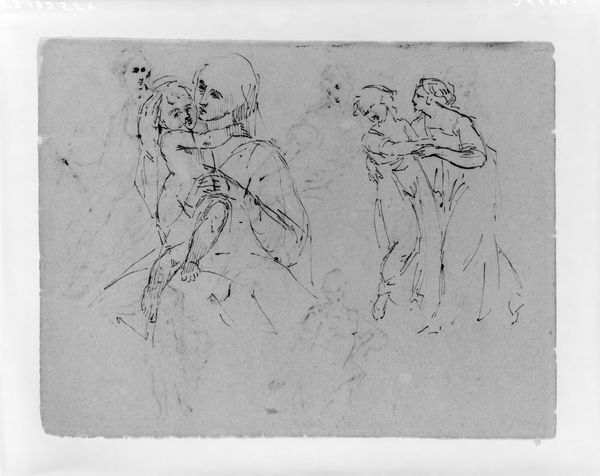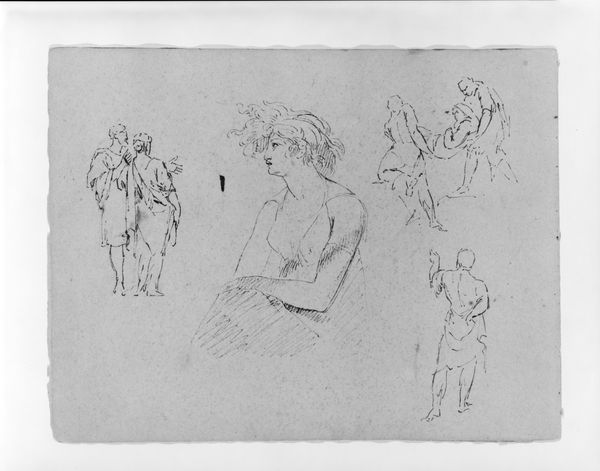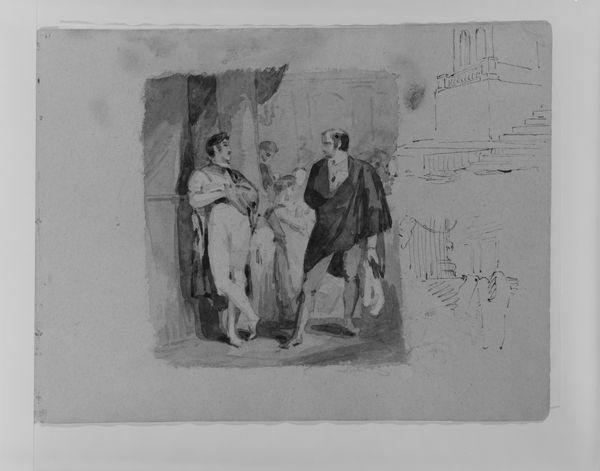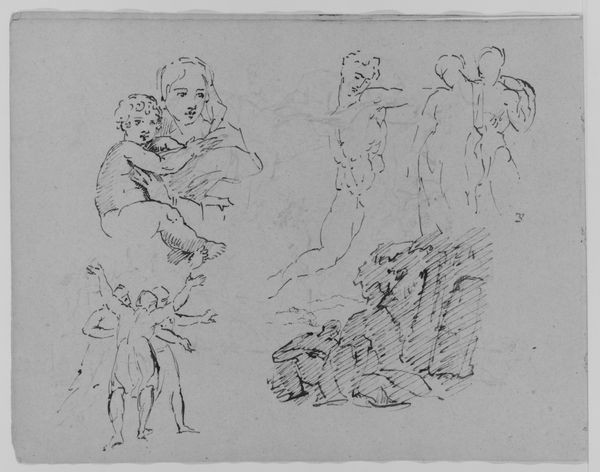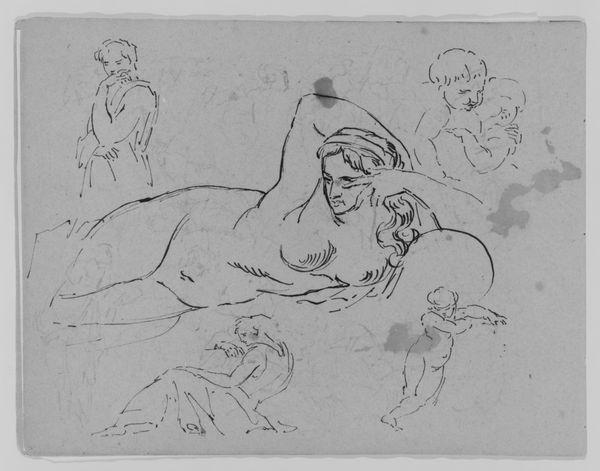
Portrait of Seated Man with Pen and Paper; Standing Female Nude, Rear View (from Sketchbook) 1810 - 1820
0:00
0:00
drawing, paper, ink
#
portrait
#
drawing
#
charcoal drawing
#
figuration
#
paper
#
female-nude
#
ink
#
genre-painting
#
history-painting
#
academic-art
#
nude
Dimensions: 9 x 11 1/2 in. (22.9 x 29.2 cm)
Copyright: Public Domain
Curator: This sketch by Thomas Sully, "Portrait of Seated Man with Pen and Paper; Standing Female Nude, Rear View" dates roughly from 1810 to 1820. We see a man working at a desk, alongside a separate, lightly drawn female nude figure. The combined work utilizes ink and charcoal on paper. Editor: My first thought is of unfinished business. There's a tension here. The solidity of the seated man, the purposeful line of his back is interrupted by these faint ethereal bodies around him, both woman and the smaller indistinct figure on the opposite side of the frame. Curator: Absolutely, and looking at the social context of the early 19th century, the roles prescribed for men and women were quite rigid. A man's intellectual life, symbolized here by the act of writing, was distinct from the female nude, often relegated to the role of muse or object of artistic study. The material realities were defined along gendered lines. Editor: That's a sharp point. And it raises questions about power. Who is doing the observing and who is being observed? The male figure seems so consciously engaged, even posed. The female figure feels more like a fleeting impression, existing almost as an idea, and quite literally is the ink that manifests to meet these intentions, while on the topic of form itself we should observe the ways he controls how his image appears in the cultural imagination through academic style. Curator: Indeed. And it makes me think about the materiality of artistic production itself. Paper, ink, charcoal-- these were relatively accessible materials even then. The drawing medium allows for experimentation and practice. It could be used across social classes, it represents a direct engagement of Sully’s hand shaping form through gesture. Editor: Yes. This reminds us of the often unseen labor and experimentation behind finished artworks, and how social narratives like gender, shape that practice and the perception of it in different forms. The act of creation itself isn't neutral. Curator: Precisely. It layers so much on top of the initial study. Editor: Which hopefully our discussion might reflect a bit, now that we know so much more.
Comments
No comments
Be the first to comment and join the conversation on the ultimate creative platform.
